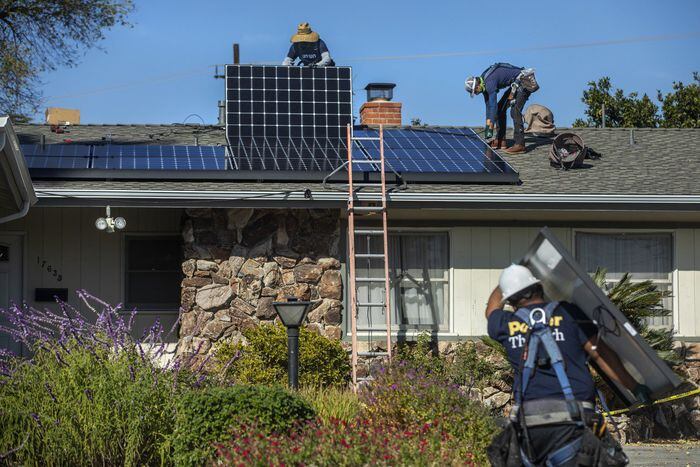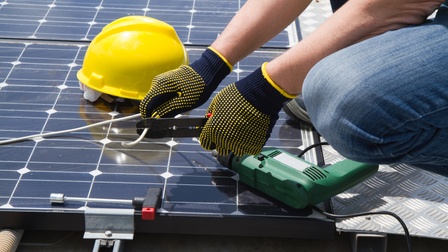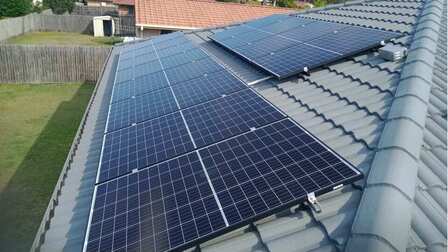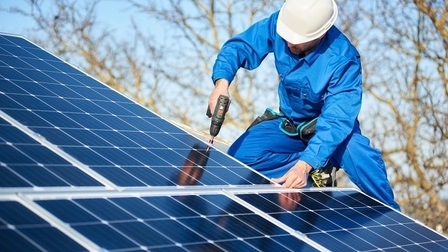Planning to buy one or more good quality solar panels? Well, there is a ton you need to know before taking the plunge and going solar. Besides pure power production ability, there are a number of requirements you need to be familiar with and practical features you ought to look out for in the best solar panels.
In detail, let's unravel some of the key aspects you need to be aware of before investing in solar panels.

What Do You Need to Know Before Buying Solar Panels?
1 - Your Power Needs
The first thing you will need to find out is an estimate of how much power you need. You need to determine how much power your home, building, or vehicle consumes. If you are connected to grid electricity, use your past utility bills.
And before you settle on a particular PV system, compare your total consumption against the total advertised maximum power (Pmax) of the panels. The Pmax is the maximum amount of solar power your panels can produce under ideal sunlight and temperature conditions.
Your power needs also determine the number of panels and the strength of the battery you will need to install. Determine whether the number of panels you have in mind can meet your power demands.
If you are not sure how to determine solar panel requirements, consider involving a solar installation professional.
2 - Site Suitability
Identify an area that is open, raised, and free from shading to ensure maximum exposure to sunlight all year round.
The surface should be firm and strong enough to withstand the weight of the panels and won't cave in and ultimately force you to fork out more money for repair. In case of a defective roof, you could repair, replace the roof or add beams or rafters to support it. But if you have brittle roofing materials like wood and slate roofs for the roof, think seriously about finding another site to mount your panels.
Also, the roof should be sizeable enough to accommodate the total number of solar panels you intend to install. Find out the dimensions of the panels and the size of the mounting space and determine if the roof can have room for all the panels. Aside from that, if you have any plans of adding more panels, you will want to make sure there is sufficient real estate to allow you to expand your array.
Not just that, you also need to keep in mind regional differences, and seasonal and weather changes. Ensure your state or location receives a sufficient number of sun hours. Sunny US states like California, Texas, North Carolina, Florida, Arizona, and Nevada among others have the best solar potential. These states have the best solar incentives as well.
3 - Types of Solar Panels

Solar panels come in diverse types the most common being monocrystalline, polycrystalline, and thin-film solar panels.
The most common type is monocrystalline panels. They are the most efficient solar panels and the most durable solar panels as well, although they are more costly. Monocrystalline PV panels have high efficiencies of up to 20%, have high power outputs, and are compact. Also, these panels are less likely to be affected by high temperatures.
Meanwhile, polycrystalline panels may be cheaper but have lower efficiencies of about 15% and are usually larger and space-consuming. These panels are also easily affected by high temperatures.
If you are looking for portable solar panels for camping, you need to look for a sizable and lightweight PV system that won’t weigh you down or eat up a lot of space.
4 - Types of Connection
There are two ways of setting up your PV system. Those who want to generate their own power and be independent of utility power can purchase solar batteries. The batteries will store excess power during the day when energy production is maximum and let you consume the stored power at night when there is no power generation.
But if you do not wish to break away from utility power, you can sign up for net metering. Net-metering involves connecting your PV system to the grid and depositing excess power the panels produce during the day to the grid. At night, the utility company then reimburses the power you credit into their system.
Ask yourself if you intend to connect to the grid or store your power in batteries. If you are net-metering or feeding your power to the grid.
Find out if your local utility power company supports net metering, if you need to pay any fees, how long it will take to get connected, and how and when you will be credited.
5 - Solar Panel Efficiency
The efficiency of a solar panel is defined as the percentage of sunlight that the PV cells can convert to usable power. Experts express it as a ratio of solar panel power and the panels' size (W/m2 ). High efficiency means more power production while using fewer panels which will eat up as little space as possible.
While most ordinary panels will have about 15 -20% efficiency, some more modern first-rate models have more than 23% efficiency.
Always check the efficiency of the panel and ensure what you finally take home is the best balance between productivity and value. The efficiency will help you estimate the performance of your PV systems under different conditions.
If you are running power-hogging appliances and would wish to maximize the amount of power, then go for high-efficiency panels. They are however more priced.
Solar panel efficiency is also affected by multiple factors including but not limited to the type of solar panel, temperature, shading, reflection, and maintenance.
To maximize efficiency, always choose a location that is not shaded from the sun by trees and buildings, and install the panels at tilted angles facing the sunrise direction to ensure maximum exposure. Check the panels routinely to ensure zero-damage and proper positioning, and clean the panels from time to time.
To curb the effects of shading on efficiency, include bypass diodes in the PV system. Furthermore, the panels should be installed a few inches above the roof to allow free flow of air and prevent temperature build-up.
6 - Cost
You will want to make sure that the total cost of purchasing and installation is reasonable and falls within your budget. Calculate the estimated upfront cost of purchasing the panels, battery, wiring components, installation and wiring equipment, and more.
Depending on your budget and how proficient your DIY handy skills are, think out whether you will do the installation on your own or seek the aid of a solar installation company.
If you are doing the set up you will need to find the necessary tools and safety gear. But those who can afford to pay more, why not opt for professional installation companies for top-quality installation? Do not forget to factor in the fees you will pay out to acquire permits.
Those who are not in a very comfortable financial position can also check with your local energy department if there are any federal grants, tax incentives, and government rebates that can assist you to cover these costs.
7 - Lifespan
Solar panels do not last forever. The modules can typically produce power at their full potential for about 15 to 25 years depending on the type and brand.
After this period, they are going to be giving out less energy than their initial capacity. So, the downside is that you will need to replace the panels after the end of their lifetime. Do regular checks for faults and defects in the PV system and frequently clean the panels to lengthen their lifespan.
8 - Maintenance

Although solar panels will not demand a lot of attention from you, you keep an eye on the PV module in its entirety and ensure it is always functioning properly. Replace or repair worn-out parts. Always check the wall-mounted display if there is one and look out for any notification or update. The inverters should be flashing green.
Build up of dirt, dust, and leafage may obstruct sunlight from reaching the photovoltaic cells and reduce the efficiency of the panels. You will need to clean the panels regularly to prevent this build-up.
Fret not, cleaning the panels is as easy as running a hose over the surfaces of the panels to remove dirt. But those who will see the need to do a thorough cleaning on their own should buy solar cleaning kits. These kits include non-abrasive brushes, sponges and wipers, and biodegradable soap. During winter, you may also have to clear snow off the solar panels.
If you don't have the time to clean and do not mind spending extra, think about installing automated cleaners. These cleaners function like sprinklers and wash the panels routinely. You can also seek the services of solar panel cleaning companies.
9 - Trusted Brands and Warranty
The market is crowded with hundreds of manufacturers who label their substandard panels as best just to win customers. Companies that have got a decent amount of hype and also walk the talk include SunPower, LG, Panasonic, Canadian Solar, Silfab, Q CELLS, JinkoSolar, Trina Solar, and REC Solar.
That is not all. Most reputable brands will express immense confidence in the products and often stand by their products with warranties of 20 - 30 years. Opt for brands that are ready to come in should any fault arise.
FAQs About Buying Solar Panels
1. How Many Solar Panels Would It Take to Power a House?
The number of solar panels you need depends on your power needs and the efficiency of the panels you will buy. However, for an average home covering 1500 - 2000 square feet, you need between 16 and 25 panels.
2. Do Solar Panels Need Maintenance?
As much as solar panels will not require frequent maintenance, from time to time you need to check the panels, wiring, battery, and other components.
Cleaning the panels is another way of ensuring maximum productivity. Run a hose over the panels routinely to remove dust, dirt, and leafage. The dirt may build up and prevent sunlight from reaching the PV cells.
3. Is it Better to Buy or Lease Solar Panels?

There are two ways of acquiring solar panels. You can buy them outright and pay in cash or with a secured or unsecured solar loan. Then again, you can also lease solar panels where you pay little or nothing to get panels installed in your home.
More than 50% of people in the USA acquired their PV systems through leasing. Leasing may seem like a bright idea because you won’t have to incur the steep upfront cost of purchasing PV systems. However,
Leasing is much more costly than buying PV systems. Most leases include escalator clauses which increase payments by 3% – 5% after every year. Also, you will not enjoy any federal tax benefits and local incentives if you lease solar panels.
4. How Long Does it Take for Solar Panels to Pay for Themselves?
It will take about 20 years for the savings you get from solar panels to cover the initial cost of purchasing and installing solar panels. To calculate exactly how long it will take to break even on your PV system investment, you need to find your monthly electricity use.
Sum up the total cost of purchasing the PV system, components, and other equipment, and the cost of installation. Subtract the value of up-front financial incentives, tax breaks, and rebates. Afterward, divide your combined expenditure by the annual financial benefits to find the estimated number of years it will take for you to achieve payback.
Solar Panel Buying Guides - Final Words
We all want to be part of the solar movement and would wish to upgrade to the new solar energy systems everyone is talking about. But most of us have very scanty information about what it entails to purchase PV systems entail.
Luckily, we have equipped you with all the knowledge you require. So, if you are genuine about acquiring solar panels, now you have no reason not to own the best solar panels for home use or travel.





